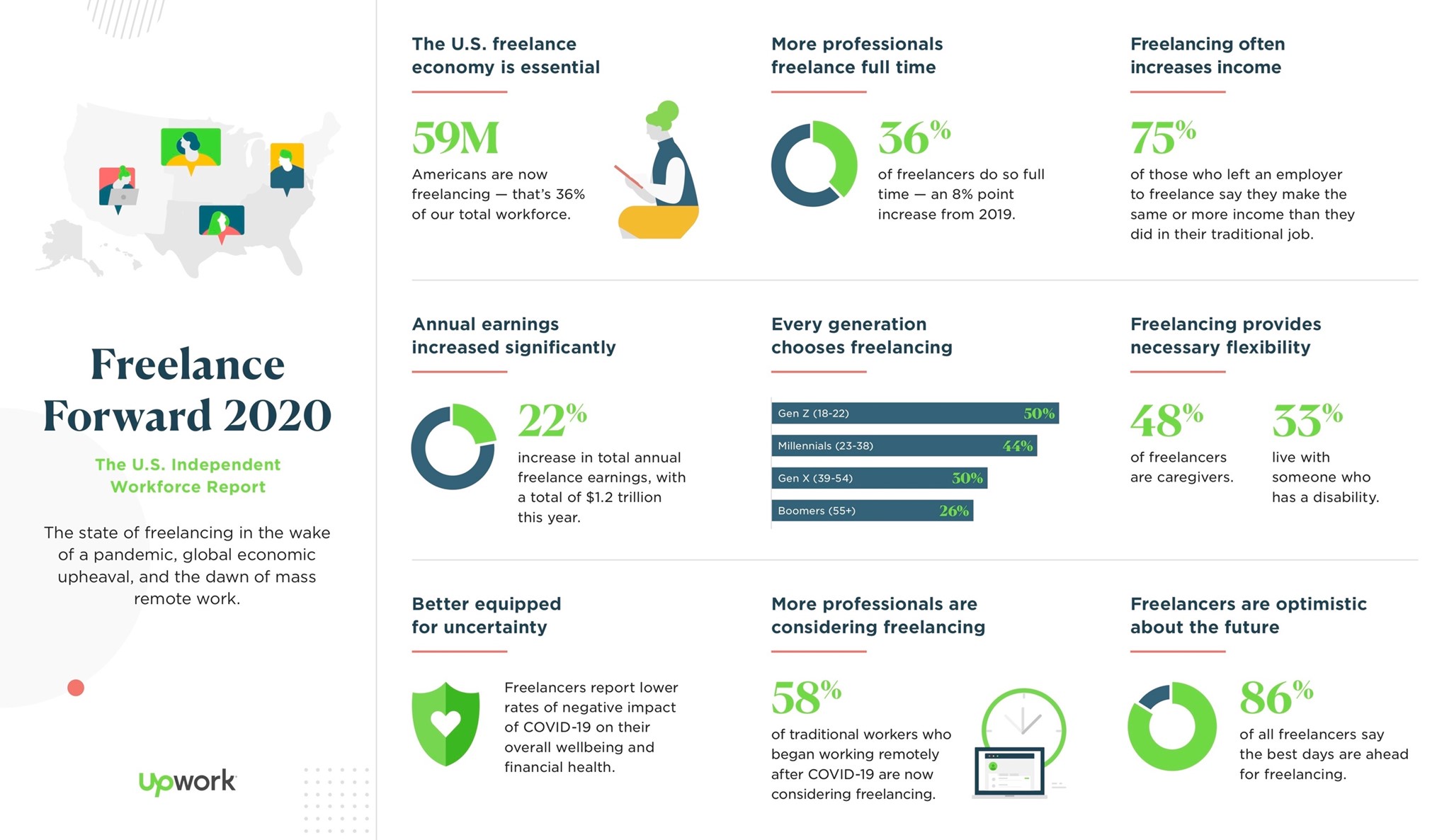- Howie Fenton
- |
- January 14, 2021
As we prepare for a recovery from our COVID infected businesses there are changes occurring that could help or hinder our success. Requiring staff to work from home has accelerated three challenges: reduced volumes, the difficulty finding qualified staff, and the reluctance to automate production. This is not the first time we discussed COVID issues and strategies; we discussed them in June, 2020 and December, 2020. However, if we reposition or change how we talk about these issues they could become opportunities.
Work From Home (WFH)
For many in-plant service providers sending parent company employees home caused an immediate reduction in work volume requiring many to reduce print shop staff levels. This is standard operating procedure for most companies, but it does not take advantage of a more powerful and flexible staffing strategy known as on call staffing strategy. This is better known as the gig economy or using freelancer staff.
The gig economy is defined by freelance, temporary, and flexible jobs and workers. The term "gig" is borrowed from the music industry in which performers refer to assignments as gigs. The gig economy started before COVID due to digitization and computer-based work but became a necessity as businesses sent staff from their offices to work from home.

According to Upwork, the #1 freelance site, one in four Americans will be working from home in 2021 (Future of Workforce Pulse Report, 12/20). According to Upwork chief economist, Adam Ozimek, "Our research shows the long-lasting impact that remote work and COVID-19 are likely to have on how hiring managers think about their organizations. As businesses adapt and learn from this remote work experiment, many are altering their long-term plans to accommodate this way of working."
The irony is that most companies are not taking advantage of freelancers. They still use traditional candidate search, qualifying and hiring strategies while the freelance strategy is a fast "fail model". This new model is more agile. You must find and qualify staff more quickly using short trials, quick work review, and then keep the freelancer or identify another candidate.
Unavailability of Qualified Staff
As you can see in this article, the lack of qualified staff is an issue that has plagued our industry for years. While gig workers are the latest possible solution, it is not the only one. Some pioneering companies have discovered other solutions.
This was discussed in the 2019 IPMA research study Next Generation Tactics and Strategies for In-Plant Service Providers. In the study, Jane Bushnell, the Director of Technical & Trades at the University of Utah (UPMS) described her new solution as a "constant assessment and change model." Part of that model includes dealing with staffing issues. According to Bushnell, "We will be changing how we hire, how we train and redefining the positions we need."
Streamlining and Automating Workflow
While on-call staffing and redefining your staffing processes can help save costs, the ultimate cost saving strategy will come from streamlining and automating your workflow processes. The more you can automate the process with software or workflow automation the faster and more efficient your process will be.
Contrary to popular belief, establishing and fixing workflow processes is not rocket science, it's actually a simple extension of problem solving which is what leading staff do every day. An article in Forbes magazine describes how if "we fail to solve the core of each problem we are dealt; thus we continuously get caught in the trap of a never-ending cycle that makes it difficult to find any real resolutions." Author Glenn Llopis also writes that "Problem solving is the essence of what leaders exist to do. As leaders, the goal is to minimize the occurrence of problems – which means we must be courageous enough to tackle them head-on before circumstances force our hand."
If you think there are opportunities to improve your workflow, look for the problems and then troubleshoot those issues. A simple workflow analysis will look for bottlenecks and quality control issues. Bottlenecks are often obvious because they are where there is a large pile of work in process. Quality control issues are where errors, mistakes or incorrect information is added to the process. Once these are identified use simple problem solving to identify the root cause and a strategy for improvement.
Often the easiest ways to streamline your procedures is to adopt best in class technology and processes. In the last few years, these automation strategies involve software automation such as Web to Print (e-commerce), Print MIS software, prepress PDF automation tools, batching software and color management.
Three Actions to Accelerate Your Recovery
As we begin our recoveries, lay the groundwork to take advantage of some of the changes that will accelerate your recovery:
1) Start a conversation with the appropriate administration about the possibility of using freelancers. Be aware however, the term freelancers or gig workers may be problematic; instead, simply using the term on-call staffing often is more acceptable. You could use this handy process to estimate staffing needs that I suggested in a recent blog.
2) Consider your own "constant assessment and change model" to address growing issues in recruiting, identifying, hiring, and retaining new staff. Another way to think about this comes from the book From Good to Great, which talks about having the right people on the bus and having them in the right seats and going in the right direction.
3) Reengineering your workflow may seem to be an overwhelming task. However, if you engage or challenge your staff in simple problem-solving exercises it might make it easy and fun. Simply ask, "Can you find our bottlenecks?" or "Where are these quality issues coming from?"
Learn More About How to Accelerate Your Recovery.
Contact me about staffing and RSA about workflow to discuss repositioning or changing how you talk about these issues so you can turn them into opportunities.